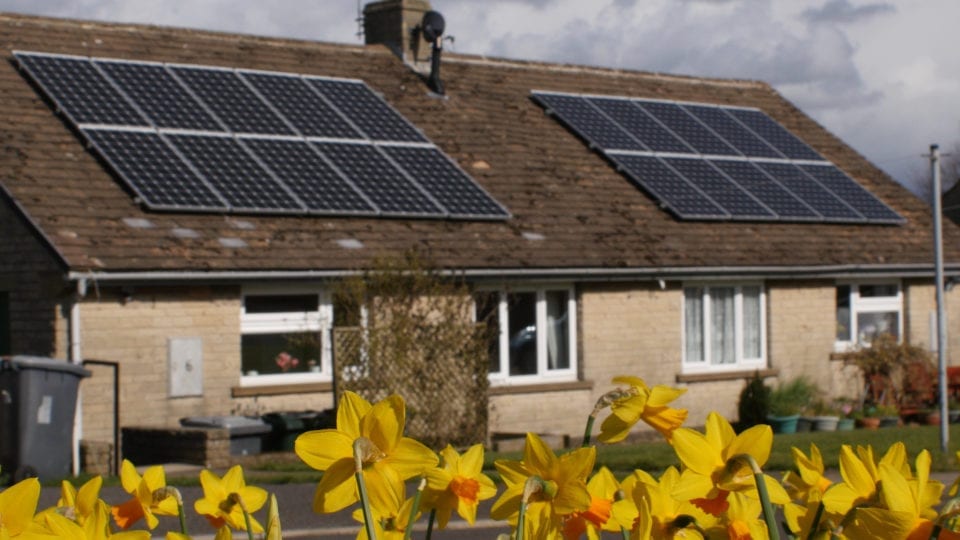New energy market would put customers at heart of smart grid
Northern Powergrid is aiming to create a new energy market where its customers can make money from solar panels, electric vehicles and home batteries.
28th November 2017 by Networks

The company wants to put its eight million customers at the heart of the smart grid and will draw up recommendations as part of a £1.9 million, three-year project – the Customer-Led Distribution System – to identify the best use of technologies in a future smart energy system and the business models and policies necessary to support them.
The company, which distributes electricity to 3.9 million homes in the North East, Yorkshire and northern Lincolnshire, made the announcement as it set out its plans to ensure that customers gain maximum benefits from low-carbon technologies transforming the energy network.
Patrick Erwin, policy and markets director at Northern Powergrid, said: “The transition to a reliable, cost-effective, low-carbon network offers huge opportunities for the economic prosperity of our region. We want to build this smart grid around the needs of our customers, delivering them the best service at the lowest possible cost.
“We want to support emerging energy markets where our customers can buy the services they need as cheaply as possible, and where they can sell services from solar panels, electric vehicles and home batteries that will help balance demand on the network and make it more efficient. Importantly, we also need to ensure the future system does not unfairly impact vulnerable customers.”
He will speak to an audience of customers and energy industry figures in London today (28 November) at the first of a series of consultation events, Unlocking a Smart Energy Future, where Northern Powergrid is outlining its plans to seize the opportunities of this transition and evolve into a Distribution System Operator actively managing the network.
The energy system is in the midst of unprecedented change. Increasing amounts of electricity are being produced by solar panels, wind farms and other local forms of generation. New ways to manage supply and demand are going mainstream, such as battery storage and paying big energy users to reduce consumption at peak times. Homes are becoming mini-power stations generating and storing electricity with solar panels, home batteries and electric vehicles.
According to the firm, this transition presents major opportunities:
- Cutting costs by managing local energy resources to create an efficient, flexible system balancing supply and demand, for example by shifting peak consumption to avoid expensive network upgrades.
- Accelerating the transition to a low-carbon energy system by developing smart services and infrastructure to support large volumes of clean renewable power.
- Delivering reliable, low-cost services to customers and rewarding them for supporting the system by creating a market for energy services.
Dr Erwin added: “As the network operator responsible and accountable for maintaining a safe, stable and reliable network and delivering electricity to eight million people, we believe we are best placed to seize the opportunities of this energy transition for our customers and ensure we continue to deliver them the best services at the lowest possible cost.
“We don’t have all the answers and we want the flexibility to be able to seize new opportunities, so we are collaborating within the industry to share best practice and consulting widely with customers and experts to flesh out our plans to ensure we take the right decisions.”
The Customer-Led Distribution System project is the first to take a holistic view of how to maximise the benefits of a future smart energy system, identifying how to accommodate large volumes of new technologies, such as local generation and electric vehicles, at least cost while at the same time enabling customers to earn income by selling energy or services to balance the network.
Researchers at the University of Bath and Newcastle University will develop models and laboratory demonstrations of distributed energy systems, local energy markets and network operations, tracking flows of energy, payments and information. This virtual system will enable them to explore different approaches, using data from real networks, and will also allow them to develop strategies that may be used to coordinate network and market operations.
Comments
Login on register to comment
Related content

Power
The future for vegetation management
Why networks should focus on data not trees to overcome the costly challenges involved in vegetation management

Power
An unprecedented opportunity for change
Why short interruptions will matter in RIIO-ED2 and how to address them.

Power
Time for less talk and more action on decarbonisation
Core "oven-ready" solutions to decarbonising heat and transport exist today and should be implemented without delay, says WPD's future power networks expert.
Related supplier content
![‘Learning by doing’ on the road to net zero [test product]](https://networksonline.s3.amazonaws.com/products/images/3.jpg)
People & Skills
‘Learning by doing’ on the road to net zero [test product]
DSO director Andrew Roper discusses 'Learning by doing'

Power
Load patterns and lockdown: how Covid-19 is impacting electricity networks
Insights into dynamics on the low voltage network as the outbreak unfolds

Heat
How E.ON. is helping the City of London become a zero emissions city
Discover Citigen. Deep in the heart of our bustling capital